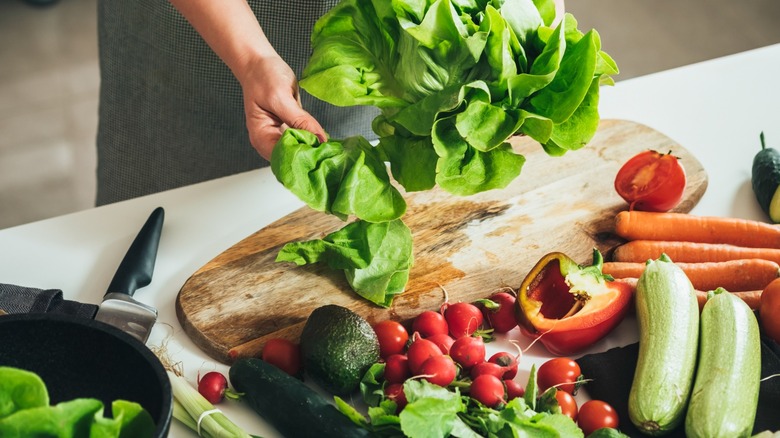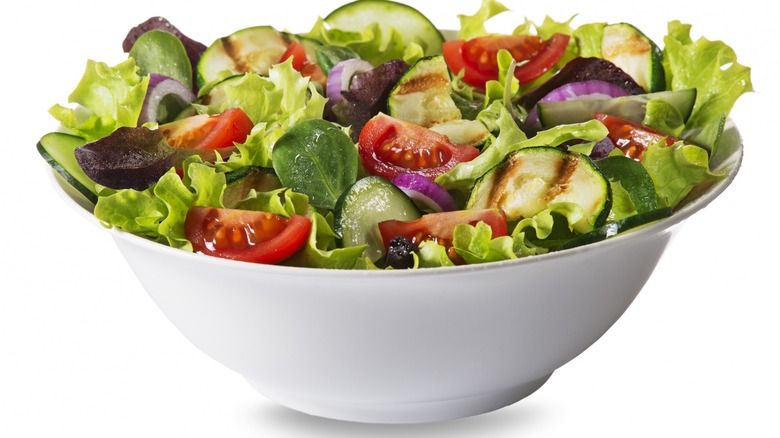It's Worth Taking The Time To Properly Chop Veggies For Salad
Making a salad may seem like a pretty basic skill, it might even be one you believe you've mastered. However, don't let the simplicity of the ingredients fool you, there's a lot more to salad making than you may be aware of. Salad making is really the art of balance. Too much of this or too little of that can make the difference between enjoying a near-perfect salad experience that makes you dance in your chair as you finish every last bite or a sad and boring affair of laborious chewing. While dressing and ingredient pairing choices are vital to this balancing act, one often overlooked area of importance is the chopping of the vegetables.
We've all eaten a salad faux pas at one point or another where the vegetation is either cut so tiny you can barely taste it or the chunks are gargantuan, taking up a whole bite with little to no room for anything else. It's worth your time to learn proper veggie chopping techniques for the sake of your salad.
Ideally, you want to create size uniformity with bites that aren't too big. The result is an even textural and taste experience that doesn't make your jaw sore and where individual flavors mingle in balance, as opposed to one mouthful of mushroom followed by one of nothing but red pepper. Fine chopping equals fine-tuning for fine salad dining.
Practice makes perfect when cutting salad vegetables
Vegetable chopping can be tedious, but think of it as an opportunity to practice your knife skills. The more you practice, the quicker you'll get, putting you well on your way to prep-cook mastery. Learning the proper way to break down each kind of vegetable can speed you along and improve your salad's presentation, uniformity, chewability, and, most importantly, flavor. Keep things comfortably chewable — nobody likes an overstuffed mouthful, especially not when the ingredients require quite a bit of chewing.
Begin with lettuce greens, cutting these to your preference (bite-sized pieces or shreds), then cut the rest of your ingredients to match or smaller. The important thing is to keep them fairly uniform with one another. This ensures your greens remain the star of the show, with supporting players providing a flavorful balance to amplify but not overpower your salad's theme. Also, keep fruits and veggies with high water content (peppers, tomatoes, cucumbers, etc.) in smaller portions to the rest of the salad as they can really sog things up if the ratios are off. Remember to keep strongly or sharply flavored items, such as fiery peppers, in smaller portions as well. These should be enhancers, enlivening each bite without overwhelming your taste buds.
If you want to get into the nitty-gritty of vegetable cutting, Gordon Ramsay's tip is a real winner.

